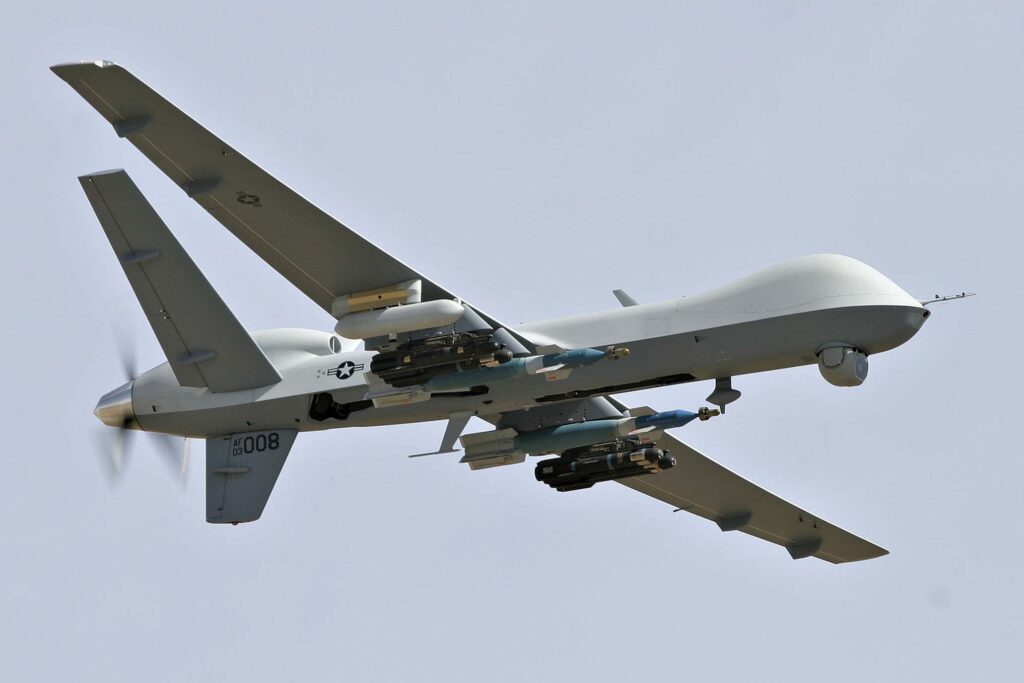Reaper Drones: The New Close Air Support Weapon
Posted on

CORRECTS: Name and title of operations group commander
CREECH AIR FORCE BASE: Over two days of briefings here by everyone from pilots to maintainers to the operations group commander of the 432nd Wing, one message rang out loud and clear: the Reaper has grown into a key Close Air Support (CAS) tool for the US military and should not be viewed primarily as an Intelligence, Surveillance, & Reconnaissance (ISR) asset.
How well has the MQ-9 performed as a CAS weapon since first being widely used in that way in Sirte, Libya from last August to December? “In an urban CAS environment, we absolutely give the A-10 a run for its money for who is the better urban CAS platform. I realize that is a bold statement, but Colin, our men and women and their equipment are a formidable combination,” 432nd Wing operations commander Col. Joe (we agreed not to use last names for security reasons) tells me in his fairly spartan office on this isolated base.
A-10 supporters, whose fervor can sometimes seem religious, need not worry that the MQ-9 is going to supplant the A-10 in other situations — yet. “In other CAS environments though, the MQ-9 isn’t where the A-10 is at. The A-10 has more weapons and the 30mm gun can do things we can’t do,” he concedes, a former F-16 pilot himself.
Another factor to take into account with so-called fast-mover aircraft like F-16s, F-18s, B-1s, B-2s and F-15s is that the enemy can hear them coming. The enemy often scatters when they hear the roar of an approaching fighter or bomber, which can be extremely useful. With an MQ-9, “they don’t know we’re there.” That can be useful if the goal of a mission is to kill particular personnel or to wipe out an enemy position — less so if the goal is to scare them off without striking, as was often the case in Afghanistan because of restrictive rules of engagement.
In Libya, more than 70 percent of the Reaper strikes were “danger-close” CAS missions, where exquisitely accurate targeting and the lowest amount of collateral damage possible were key. Hellfire missiles, originally designed to be used by attack helicopters, have smaller warheads than bombs and can be carefully guided during a strike to avoid destroying a building.
“We dropped 100s of Hellfires and handed that city back to the Libyans intact because we were using highly accurate weapons,” Col. Joe said. Most important, not a single civilian casualty caused by a Reaper strike was reported during the Sirte operations.
The larger lesson from that operation may be a new approach to working with local forces against terrorists and more organized groups. “We took an indigenous ground force we supported and we enabled them to take back land from our common enemy of ISIS,” the 432 commander says. “In many ways, it was the coming out party of the MQ-9 in urban CAS and our ability to go after an embedded enemy danger close.”
How close were the enemy and friendly forces? “We had shots as close as 25 meters,” Col. Joe says. One effect of the Reaper’s persistence — its ability to stay over one area for up to 20 hours — was the sense of protection it offered to friendly forces on the ground. “We took MQ-9s and we watched and protected the indigenous forces. If ISIS moved, we were there to alert GNA forces (friendly Libyans) or take action ourselves.” He got an email from a source he would not identify stating that GNA casualties plunged 400 percent after the US started deploying MQ-9s.
In fact, Col. Joe is so confident of the Reaper’s CAS and strike proficiency that he thinks the aircraft should be considered a candidate for the Air Force’s low-cost fighter competition known as OA-X. “I think the MQ-9 should throw their hat in the ring for OA-X, yes,” Col. Joe tells me, without elaborating. The proposed initiative is designed (as best we can tell) as a way to fight in permissive environments at much lower cost than would be the case with F-16s, F-15s, F-22s or F-35s. It would also ease the wear and tear on the more advanced fighters which are deploying at much higher rates than they were originally designed for.
Subscribe to our newsletter
Promotions, new products and sales. Directly to your inbox.
